Three Defensive Improvements for the NCAA Tournament
Big Blue Nation is a super passionate fanbase with a lot of smart basketball fans. With that passion comes plenty of opinions whether things are going smoothly or poorly. While there might be debates as to playing time, Coach Calipari, or what round the ‘Cats “need” to reach, there is one topic that pretty much aligns the fanbase. Kentucky’s defense has not been good and has very serious flaws. There are plenty of historical metrics that you could already point to that would disqualify the Wildcats from title contention before the ball ever gets tipped on Thursday evening. However, even disregarding those numbers, the film would suggest Kentucky has no real chance unless something improves defensively. That can be hard to do in the middle of March though.
The Wildcats will enter March Madness ranked 108th in KenPom’s adjusted defensive efficiency. Opponents take just a tick under 40% of their shots from three-point range where they make 32.6%. That is over a full percentage point below the national average, but when Kentucky gets beat it regularly involves the opponent making double-digit three-point shots. Inside of the arc, teams shoot just under 50% despite the ‘Cats first nationally in block rate at 16.1%. That means they are blocking shots but not actually protecting the rim. There are far too many layups that typically result from straight line, strong hand drives. Coach Calipari has embraced some more “modern offense” this season, but it hasn’t translated to “modern defense.” Kentucky gives up too many three-pointers and layups.
It doesn’t take much to identify that Kentucky has problems defensively. Most fans can even describe the issues without needing to get too far into the weeds. However, the more difficult question is what can be done to actually fix the problems? Is there even anything that can be done when it is win or go home at this point? That is what we will address in the KSR Film Room.
The Wildcats need to embrace their ability to block shots by planting a seven-footer at the front of the rim and funneling the ball to the shot-blocker. This doesn’t mean getting beat off of the dribble intentionally, but at least you know a second line of defense is there. Along with that adjustment, the off-ball defenders need to stay home more on the perimeter. Don’t give up open three-point shots by over helping. Let the shot blockers deal with the drive to the basket. Also, yes, mixing in some 2-3 zone and other defensive looks can potentially steal an extra stop or two. With as good as Kentucky’s offense continues to be, the defense only requires marginal improvements. The three potential fixes outlined here could be implemented before Thursday’s game against the Oakland Golden Grizzlies. Let’s take a closer look.
Start Protecting the Rim, Not Just Blocking Shots
This has been a discussion in many “Watch the Tape” breakdowns throughout the season. Kentucky has consistently been among the best at blocking shots. In fact, they’ve continued to improve in that area thanks to more and more minutes going to Ugonna Onyenso. The Wildcats are the best in the country, blocking 16.1% of opponent’s shots, entering the NCAA Tournament. However, that hasn’t always equated to actually having success protecting the rim. Those are two different things. When Onyenso, or the other seven-footers, aren’t able to block a shot the result is a layup far too often. This is largely due to getting beat off of the dribble on the perimeter, but the big men routinely are out of position or get sealed off around the basket.
Good things happen when Ugonna Onyenso never leaves the paint. He can be slow to react when he has to cover too much ground, but when he is planted inside he is pretty darn good. Kentucky needs to structure things defensively so that he can just patrol the paint. That may have some consequences on the perimeter, but there are plenty of consequences to how things are going right now. Put one of the best shot blockers in college basketball at the front of the rim and hope for the best.
On this possession at Tennessee, Ugonna Onyenso technically left the paint, but never ventured too far out onto the perimeter. He also kept himself in getting involved in hand-to-hand combat with Tennessee’s post player. As we will show in a couple clips, he too often gets sealed by a more physical player. However, when he stays detached, his instincts and length allow him to block a lot of shots. This is a great play from the sophomore center.
This is what Kentucky needed more of against Texas A&M on Friday night in Nashville. Instead of being out beyond the arc trying to guard penetrating playmakers, Onyenso was allowed to stand near the rim and await a driver. Even if the man he is guarding goes to set a ballscreen, the ‘Cats need to start letting Onyenso just sag back in the paint. Putting him in the best position to utilize his strengths is key.
These two clips show Zvonimir Ivisic and Ugonna Onyenso getting sealed inside. Obviously that isn’t ideal and they each need to be more aware in order to avoid getting sealed. However, rim protection can start on the perimeter by not getting beat off of the dribble so easily. There is just no resistance on either of these possessions. The problems begin with trying to guard so far from the basket. Then, there is no communication at the point of the ballscreen. When you are guarding drive-first guards like Texas A&M has, just back up and play underneath all of that screening action. More resistance on the ball would help the seven-footers be more effective at the rim. It is hard when dynamic guards get such a head of steam to the rim.
Focus on Taking Away Three-Point Shots
Three is worth more than two for the opposing offense as well. With as dynamic as Kentucky’s offense is, they don’t need that many stops to go win the game. However, it is harder when the other team shoots highly efficient shots like layups and three-pointers. It is hard for the opponent to keep up by scoring two at a time. Scouting report and personnel-specific decisions can still be made, but as a general rule the Wildcats should sell out more on taking opponents away from beyond the arc. Cut down on helping off of the ball. Instead, stay home and take away the inside-out three-point attempts. This will play into the hands of the seven-footers waiting at the rim to block 16.1% of opponent’s shots as well. Great shot blocking teams should feel the need to help so much.
This might be Kentucky’s best defensive possession of the season. When #1 Sears drives it for Alabama he essentially is looking at the backs of defenders on the perimeter. There is nowhere for him to go. Reed Sheppard tightens up to his man as the ball is driven. On the weak side, both Justin Edwards and Rob Dillingham tighten up to their men. It is perfect. Ultimately, Sheppard makes a great play on the ball from behind on the drive. Tighten up to your man as the ball is driven towards you should be the mantra. Stop over helping on the drives! Even if it results in a couple of more layups per game, at least it will be only layups and not layups plus three-point shots.
If you are going to closeout short, then you need to exaggerate it like this. Excellent job by Justin Edwards essentially not even guarding the non-shooter in this clip. Too often, Kentucky gets caught in between. They aren’t REALLY helping clog things up inside but also aren’t REALLY taking away shots on the perimeter. It is okay to be often wrong, but never in doubt. Commit to a style of play and embrace it. There is nothing wrong saying you are going to take away three-point shots while still closing out short to non-shooters.
Here is a perfect example of “you always need to be doing something.” Again, often wrong, but never in double is okay. Both Antonio Reeves and D.J. Wagner made pretty aggressive plays on the drive and it forced #23 Radford to pick up his dribble. That is good. However, Adou Thiero is in no-man’s land at the front of the rim. He’s hunting a blocked shot, which isn’t necessarily a bad thing when guarding a non-shooter, but the drive was also stopped by three other defenders. It is hard to blame Thiero for a 27.3% shooter making one, but maybe this is one where you stay tighter no matter what instead of over helping.
2-3 Zone and Mixing Up Defensive Looks
It is no secret that Kentucky isn’t very good in their man-to-man defense. Therefore, why not mix it up and try to “junk” your way to a couple of extra stops each game? That can come in the form of a 2-3 zone, some extended full court pressure, trapping the ballscreens or the post, etc. Kentucky played a few possessions of 2-3 zone against Texas A&M and had initial success before the Aggies settled in against it. Even if it were just for a few possessions each half, the Wildcats could be better off mixing in different defensive looks to keep the offense guessing and having to look to the sideline for instruction.
Keep five defenders inside of the arc, stay between the ball and the basket, and plant your seven-footer at the front of the rim. Those are three positive developments that a 2-3 zone forces the Wildcats into. Again, we aren’t talking about turning into Coach Jim Boeheim’s Syracuse. Kentucky just needs to try and catch the offense off guard a couple of times each half. Notice how the ball didn’t get inside the three-point line for 20 seconds. Then, as soon as it did, Texas A&M turned it over.
Look at how stagnant Texas A&M was offensively on the second consecutive possession where Kentucky played zone. The different look lulled them into passing the ball around the perimeter without any real purpose. Coach Calipari would happily live with #0 Carter, a 23.9% three-point shooter, taking this shot as many times as he wants.
In Kentucky’s early season win against North Carolina they were able to neutralize Armando Bacot with double teams and constant pressure in the post. The Wildcats didn’t necessarily double him on every single catch, but they mixed it up so that he was never comfortable. This is absolutely perfect execution by Adou Thiero on this possession. Kentucky had similar success against Mississippi State’s Tolu Smith throwing some early double teams at him. This could be another tool in the tools box for the ‘Cats down the stretch.
What you see here isn’t a specific defensive strategy or anything that Coach Calipari called for from the sidelines. However, it is an example of Justin Edwards playing really hard and having the confidence to decisively go make a play. It goes back, once again, too often wrong, but never in doubt. There was a chance he would whiff on the steal attempt and give up a dunk. Also, #55 Estrada could have seen Edwards coming and whipped the ball to the corner for an open three-point shot. This time though it all worked out for Edwards. He watched the play develop and went aggressively to go steal the ball. Then, on the other end, he was rewarded with a four-point play. Kentucky is at their best when they are aggressive and forcing turnovers defensively.
What Does All of This Mean?
Kentucky is entering the tournament ranked 108th in KenPom’s adjusted defensive efficiency. No matter what they do, they aren’t finishing in the Top 20 which typically is a requirement for national championship teams. However, the Wildcats aren’t alone as offensive juggernauts who aren’t very good defensively. Alabama and Illinois are very similar to Kentucky in terms of the metrics. Baylor, BYU, Gonzaga, and Wisconsin are all of a similar profile as well. That is seven of the Top 20 teams in the tournament. It is likely that at least one of those teams breaks through to a Final Four.
A lack of roster continuity due to constant injuries kept the Wildcats from being able to improve much throughout the season. Now that they have a full compliment of players in March it is a little too late for full sail changes. However, Coach Calipari and the ‘Cats can “tweak” things just enough to lead this team to where they want to go.
- Embrace rim protection and limit straight line, strong hand drives to the basket.
- Sell out on taking opponent’s away from three-point range.
- Mix up the defensive looks (zone, full court pressure, trapping the ballscreens, etc).
These aren’t just random examples of ways Kentucky could, or should improve. They direct ways they can get the extra one or two stops each half that they need to win close games. You can see from the clips provided that this isn’t reinventing the wheel. We are talking about small changes that could yield big results the rest of this month. Go ‘Cats.
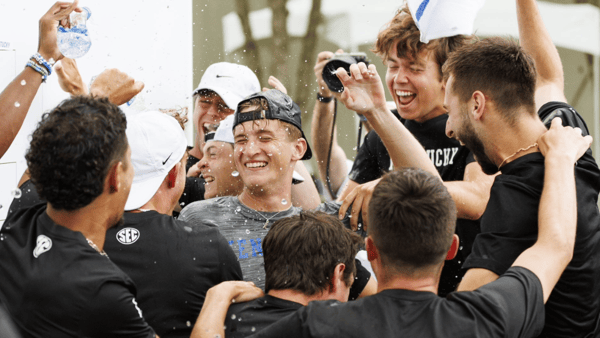
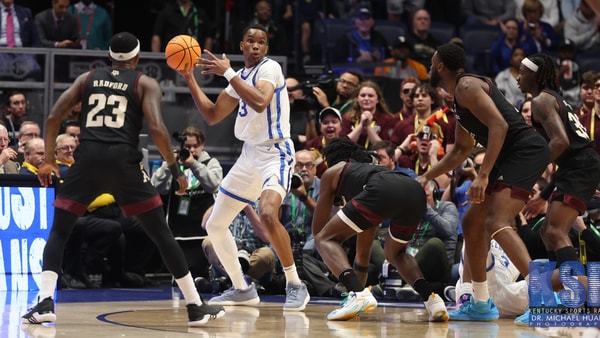


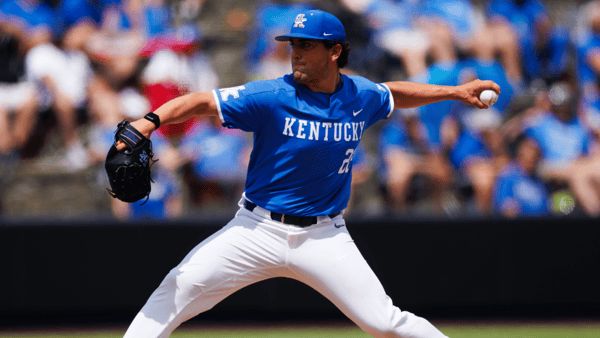
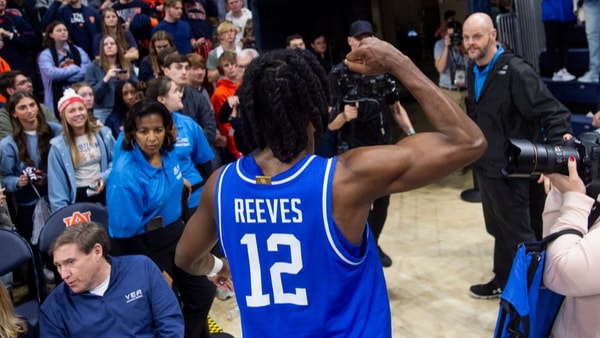

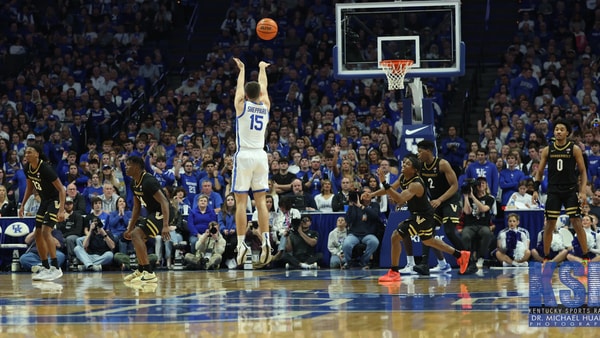
Discuss This Article
Comments have moved.
Join the conversation and talk about this article and all things Kentucky Sports in the new KSR Message Board.
KSBoard